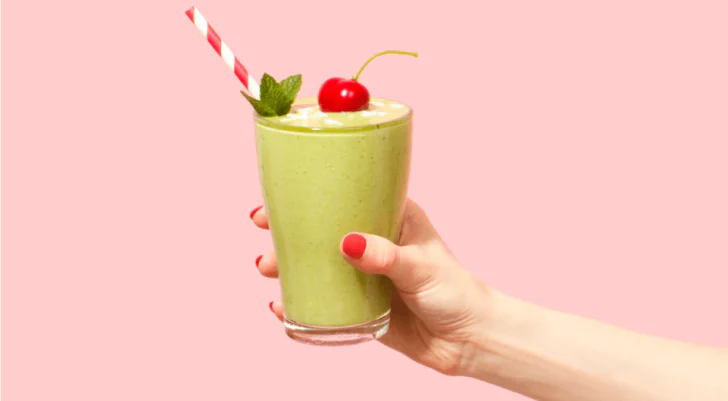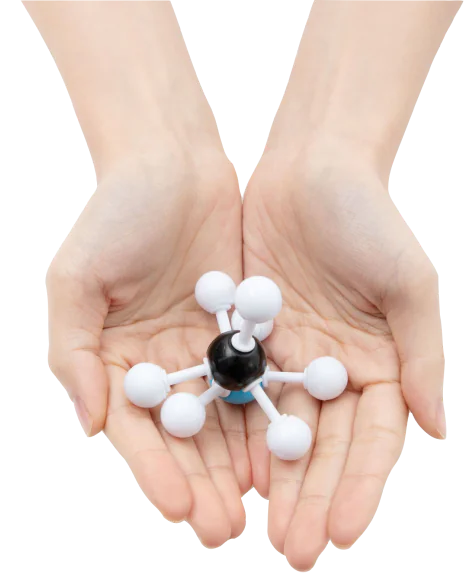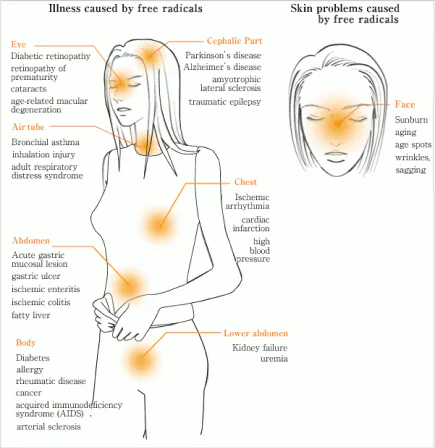what are Antioxidants?
Antioxidants are molecules that interact with free radicals to secure them and avert damage that they could cause. Without the counteraction of antioxidants over time the damage to cells caused by free radicals can become irreversible. Of course, it is more efficient to not allow this damage to be done in the first place, because with time cells start to lose their ability to regenerate – according to one theory on aging.

what are Antioxidants?
Antioxidants are molecules that interact with free radicals to secure them and avert damage that they could cause. Without the counteraction of antioxidants over time the damage to cells caused by free radicals can become irreversible. Of course, it is more efficient to not allow this damage to be done in the first place, because with time cells start to lose their ability to regenerate – according to one theory on aging.
However, studies have found that reasons why you should supplement your diet with antioxidants go far beyond only delaying the aging process. The same things that bring us joy and happiness – physical activity, fresh air, positive thinking and antioxidants – also improve the wellbeing and lifespan of our cells. Antioxidants protect us from heart disease by preventing oxidation of low density lipoproteins, a.k.a. bad cholesterol.
Oxidised cholesterol damages arteries. Hundreds of studies have linked use of antioxidants with delaying development of cancer (prostate, colon, lung) and other degenerative diseases, including slowing development of Alzheimer’s, protecting against macular degeneration (main cause of blindness) and cataract.
Italian nutritionists have now confirmed previous suspicions – mass-produced fruits and vegetables contain significantly less antioxidants than organic produce. Having compared a range of organically grown fruits and vegetables, as well as milk and red wine the Italians concluded that organic products have a much higher antioxidant value (ORAC1 value) than mass-produced products. Furthermore, the level of antioxidants increased significantly quicker for the group using organic products. This is yet another confirmation of the major modern day gap between free radicals and antioxidants which are their only antidote.
It is difficult to reduce the sources of free radicals, but the amount of antioxidants that we consume is entirely up to us! The most important antioxidants consumed daily are vitamins E and C and carotenoids. The most powerful antioxidant known so far is Astaxanthin, which is a carotenoid, obtained from microalgae and is offered by LYL ASTAXANthin nutritional supplement. There are other better known, but less effective carotenoids: beta-carotene (found in bright orange carrots), lycopene (found in red tomatoes) and zeaxanthin (found in bright yellow corn).
Astaxanthin is the most powerful free radical scavenger of all antioxidant molecules ever discovered and studied; it is 65 times stronger than vitamin C, 14 times stronger than vitamin E, 54 times stronger than beta-carotene, 20-50 times stronger than synthetic astaxanthin.
ORAC value – oxygen radical absorbance capacity. Method of measuring antioxidant capacities in foodstuffs.
OXYGEN FREE RADICAL SCAVENGING ABILITIES OF VITAMINS C, E, b-CAROTENE, PYCNOGENOL, GRAPE SEED PROANTHOCYANIDIN EXTRACT AND ASTAXANTHINS IN VITRO. Debasis Bagchi, Ph.D. Pharmacy Sciences, Creighton University School of Health Sciences, June 2001
free radicals?
Free radicals are atoms, molecules and ions with one or several unpaired electrons. Free radicals can quickly and irreversibly oxidise various structures in the body, including cell DNA. Free radicals are formed during normal biochemical processes in the body, including breathing and digestion or increased physical exertion. Usually the body can combat the amount it has produced itself.

Today's problem?
Today there is a misbalance between free radicals and antioxidants, which is called oxidative stress. The reason for it is that massive production of free radicals is caused by alcohol, medicines, radiation (including UV and x-radiation), cigarette smoke, environmental pollution and ozone1. Excess weight, diseases, mental and emotional stress also contribute to the burden created on the body by free radicals.
Dr. Artemis Simopolous explains: “The amount of free radicals in our bodies has increased significantly, while the amount of antioxidants consumed in our diets has decreased by up to six times”. Atherosclerosis, tumours, heart attack, cataract, aging of the retina, decreased immunity – all of these are typical health issues caused by oxidative stress.
The chemical reaction created by free radicals is called oxidisation. The damage created by oxidisation can be seen on metal as it rusts. Another experiment illustrating oxidisation can be done with an apple: cut an apple in half; cover the left half with lemon juice (which contains vitamin C and polyphenols with antioxidative properties), but leave the right one as is. In just a matter of minutes the half on the right will start to turn brown, while the one that was treated with lemon juice, thanks to the natural antioxidants in lemon juice, will be just as fresh and white as if it had just been cut.
A similar oxidisation process also takes place within the body if the amount of free radicals gets out of control. The damage caused by oxidisation and the effects of free radicals can best be seen on our skin. One of the reasons for fine lines, wrinkles and dry skin, in other words, aging of the skin, is damage to cell DNA which is caused by free radicals.
Astaxanthin is the most powerful antioxidant in nature and it is called a superantioxidant for good reason. By interacting with free radicals it secures them and averts damage that they could cause. Astaxanthin scavenges for free radicals in the water-loving (hydrophilic) end of the cell membrane, as well as in the fat-loving (lipophilic) end – unlike many other antioxidants, which only work either inside the membrane (vitamin E and beta-carotene) or on the outside (vitamin C).
1. OXYGEN FREE RADICAL SCAVENGING ABILITIES OF VITAMINS C, E, b-CAROTENE, PYCNOGENOL, GRAPE SEED PROANTHOCYANIDIN EXTRACT AND ASTAXANTHINS IN VITRO. Debasis Bagchi, Ph.D. Pharmacy Sciences, Creighton University School of Health Sciences, June 2001
3. Simopoulos AP. The importance of the omega-6/omega-3 fatty acid ratio in cardiovascular disease and other chronic diseases.Exp Biol Med (Maywood). 2008 Jun;233(6):674-88. doi: 10.3181/0711-MR-311. Epub 2008 Apr 11.
4. Simopoulos AP. The importance of the omega-6/omega-3 fatty acid ratio in cardiovascular disease and other chronic diseases.Exp Biol Med (Maywood). 2008 Jun;233(6):674-88. doi: 10.3181/0711-MR-311. Epub 2008 Apr 11.


The chemical reaction created by free radicals is called oxidisation. The damage created by oxidisation can be seen on metal as it rusts. Another experiment illustrating oxidisation can be done with an apple: cut an apple in half; cover the left half with lemon juice (which contains vitamin C and polyphenols with antioxidative properties), but leave the right one as is. In just a matter of minutes the half on the right will start to turn brown, while the one that was treated with lemon juice, thanks to the natural antioxidants in lemon juice, will be just as fresh and white as if it had just been cut.
A similar oxidisation process also takes place within the body if the amount of free radicals gets out of control. The damage caused by oxidisation and the effects of free radicals can best be seen on our skin. One of the reasons for fine lines, wrinkles and dry skin, in other words, aging of the skin, is damage to cell DNA which is caused by free radicals.
Astaxanthin is the most powerful antioxidant in nature and it is called a superantioxidant for good reason. By interacting with free radicals it secures them and averts damage that they could cause. Astaxanthin scavenges for free radicals in the water-loving (hydrophilic) end of the cell membrane, as well as in the fat-loving (lipophilic) end – unlike many other antioxidants, which only work either inside the membrane (vitamin E and beta-carotene) or on the outside (vitamin C).
1. OXYGEN FREE RADICAL SCAVENGING ABILITIES OF VITAMINS C, E, b-CAROTENE, PYCNOGENOL, GRAPE SEED PROANTHOCYANIDIN EXTRACT AND ASTAXANTHINS IN VITRO. Debasis Bagchi, Ph.D. Pharmacy Sciences, Creighton University School of Health Sciences, June 2001
3. Simopoulos AP. The importance of the omega-6/omega-3 fatty acid ratio in cardiovascular disease and other chronic diseases.Exp Biol Med (Maywood). 2008 Jun;233(6):674-88. doi: 10.3181/0711-MR-311. Epub 2008 Apr 11.
4. Simopoulos AP. The importance of the omega-6/omega-3 fatty acid ratio in cardiovascular disease and other chronic diseases.Exp Biol Med (Maywood). 2008 Jun;233(6):674-88. doi: 10.3181/0711-MR-311. Epub 2008 Apr 11.
